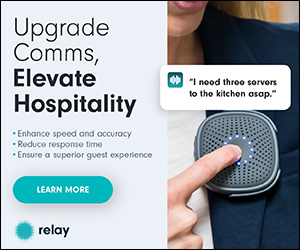Remember the expression “too many cooks in the kitchen”?
Well, go ahead and unlearn it.
In 2021, the restaurant industry is experiencing an unprecedented labor shortage that’s seeing worker resignations and job openings at an all-time high. Despite most restaurants having reopened after COVID-19 closures, the restaurant industry was still 1.5 million jobs—or 12%—short of pre-pandemic levels as of June 2021. Not to mention, 84% of operators said their staffing levels are lower than normal.
Restaurateurs across the U.S. are trying everything and the kitchen sink to recruit and retain employees in the face of a labor shortage the likes of which this industry hasn’t seen in decades.
Now that we’ve gotten all the kitchen idioms out of our systems, let’s focus on breaking the 2021 labor shortage down into digestible bites.
WHO is Affected by the Labor Shortage in the U.S.?
In March and April of 2020, the onset of the COVID-19 pandemic saw the restaurant industry suffer far more job losses than any other sector. In total, 2.5 million food service employees lost their jobs in 2020.
But while dining restrictions have now been lifted across the country and restaurants have begun hiring at rapid speed, not all of these workers have returned. This labor shortage has affected restaurants across all segments, but full-service venues have been hit particularly hard, especially in their kitchens where a back-of-house labor shortage appears to be more pronounced. This is true in both small towns and major restaurant cities like New York City.
WHAT is a Labor Shortage Anyway?
A labor shortage means there are more jobs than people out of work. Though this is a phenomenon that is not often seen within the U.S. economy, the COVID-19 pandemic has turned many industries upside-down and resulted in an acute worker shortage. Currently, there are about 3.5 million fewer people in the workforce relative to February 2020.
WHY is There a Worker Shortage?
There are several driving forces behind the 2021 labor shortage.
The biggest reason for the employee shortage appears to be the fact that many workers have simply left the restaurant industry for more stable jobs. The hospitality industry has a reputation for long hours, low wages, and no benefits—a precarious combination that put many people at risk during the pandemic. When these workers were laid off, many took the opportunity to pursue careers with more stability and have not returned to restaurant work.
Stagnant wages (including an unchanged minimum wage and tipped minimum wage) have also meant that many restaurant workers were actually earning more not working due to the boost in unemployment benefits, on top of stimulus checks. This extra income, paired with the safety of staying at home, has made some workers reluctant to return to work—a sentiment that’s unsurprising considering the fact that food service workers had some of the highest mortality rates during the pandemic.
But while the pandemic has certainly caused some shifts that have contributed to the current employee shortage, the restaurant industry has always struggled with labor shortages to some degree. Even prior to the pandemic, the Bureau of Labor Statistics predicted that the demand for cooks would steadily increase as new restaurants continue to open and people continue eating out. And as an article from Civil Eats notes, “Although the overall demand for cooks in schools, hospitals, and cafeterias is expected to grow by 6% from 2016 to 2026, the growth for restaurant cooks is expected to grow by 12%. That means the U.S. restaurant industry will need a total of 1,377,200 cooks in 2026, compared to 1,231,900 cooks employed in 2016.”
Increased immigration enforcement has also contributed to the restaurant worker shortage because it has reduced the number of undocumented workers. This directly impacts the restaurant industry because it has always relied heavily on their participation in the labor force.
What’s more, the number of teenagers in the labor force is half what it was 25 years ago, which makes finding people willing to work entry-level, low-earning positions increasingly difficult and contributes to the overall shortage of employees.
These two factors are especially relevant in cities like Miami where there are a huge number of restaurants, an ongoing government crackdown on hiring undocumented workers, and a relatively low state minimum wage compared to the rest of the country.
HOW Do You Cope with the Labor Shortage?
Now that we’ve explained the who, what, and why of the labor shortage, we’ve got some tips on how your business can continue thriving in this job economy.
1. Get Creative with Recruitment
Recruitment and retention are two of the restaurant industry’s biggest challenges, even on a good day.
In light of the labor shortage, they’ve now become even more critical.
Maybe there was a time when people were lining up to work at your restaurant. If they’re no longer coming to you, don’t be shy to go to them. Promote job ads online, work with restaurant staffing agencies in your area, and advertise through local schools and community centers. Agencies can be especially helpful when it comes to kitchen staffing.
Job descriptions tend to be really dry and boring, so make yours stand out. Play to your strengths.
Is your restaurant a really fun place to work? Make your job ad playful and fun to reflect that.
Do you offer something most other restaurants don’t? Make sure to include that in your ad.
Also, consider offering an employee referral bonus. If a staff member refers a friend, and that friend gets hired and stays for more than three months, then the referring employee gets a cash bonus on their paycheck or another type of incentive.
2. Partner Up
Beyond just ads, see if you can partner with local organizations, high schools, college job fairs, after-school programs, and other grassroots initiatives that have budding talent. Offer free training or skill-building workshops to people entering the labor force in exchange for a term of employment.
They get full-time employment. You get full-time employees.
3. Trim the Fat off Admin Tasks
Restaurant staff are already working long hours for low wages, so make sure you aren’t piling non-essential responsibilities onto the plates of your skilled workers.
Invest in technology that can automate some of the more time-consuming administrative tasks your staff are currently responsible for. Things like inventory and reservations can be automated without a huge investment, but will save your skilled staff a ton of time.
Freeing your skilled staff of these more menial tasks will let them focus on the work they’re really passionate about and trained for—plus, they’ll be happier for it, which leads to more productivity and higher retention.
4. Be Flexible with Schedules
Your staff aren’t robots. They’re people, and they respond well to being scheduled as such.
When building your employee schedule, factor in staff preferences (number of shifts per week, time of day, etc.) and their outside lives before putting them into the spreadsheet.
If someone says they work best in the evenings, scheduling them for five early morning shifts a week (even though they’re technically available) won’t be great for staff morale or productivity. Make it easier to hang on to skilled workers by taking their shift preferences into account as much as possible.
Also, have a protocol for accepting and processing employee time off requests, as well as for emergency and non-emergency scheduling conflicts. Knowing you’re sensitive to their work-life balance will go a long way toward employees putting down roots at your restaurant.
Job flexibility is a key value for a lot of workers in our current environment, so be proactive about getting their input for your staff schedule.
5. Perk Up Employee Benefits
Maybe you’re in a position to offer competitive wages—if so, that’s great!
What you can’t offer in wages, however, you can likely offer in other types of perks.
This is a good opportunity to get a little creative and come up with some original incentives you can offer your staff, like professional training and development opportunities, company events, overtime opportunities, and more.
If you’re able to convert some of your part-timers into full-timers and offer them salaried positions or benefits packages, that’s even better.
People work harder when they feel valued, so come up with some new ways to show your appreciation for their hard work.
6. Change Your Management Style
Traditional management styles keep employees in the dark about high-level decisions, even when those decisions impact all staff.
Trusting your employees and involving them in those decisions is proven to empower staff to work harder by showing them how their work impacts the restaurant’s overall success.
Open communication and transparency will also strengthen the relationship between you and your staff. It fosters a culture of shared ownership which is empowering to everyone involved.
7. Open Up to Different People
We tend to hire people who match our existing team. It’s human nature to look for candidates you can see yourself in.
But, when you create a more diverse, equitable work environment, it not only widens the pool of people from which you can hire, it also adds a wealth of new perspectives that can strengthen your business. Wider pool, more candidates, better hires.
For instance, consider what message an all-male staff might send to potential female applicants. Or, how a highly-skilled worker living with a disability might feel about applying to a restaurant that isn’t accessible.
Adding a little bit more diversity to your hiring practices will open up the pool of people you can pull from and improve your business overall. Win-win.
WHEN Will the Labor Shortage End?
In the words of Willy Wonka, “There’s no knowing where we’re going, but it shows no signs of slowing.”
There are a number of predictions about the future direction of the U.S. labor shortage. Many focus on whether the shortage will lead to more minimum wage increases and how they will handle the increased cost of labor.
Nobody is entirely sure when the trend will shift, but for now it’s important to recognize that you are operating in a “seller’s market” as far as employment goes. That is to say, lack of demand puts the power in the hands of the employees.
While low unemployment rates are usually celebrated by the mainstream public, it doesn’t change the fact that a labor shortage is challenging for small business owners—especially restaurant owners who are still struggling with the impact of pandemic-related closures.
Trust in your business concept and restaurant brand while exploring ways you can adapt to the evolving labor landscape, like the seven creative labor shortage solutions we’ve discussed here. •
Dana is the former Content Marketing Manager at TouchBistro, sharing tips for and stories of restaurateurs turning their passion into success. She loves homemade hot sauce, deep fried pickles, and finding excuses to consume real maple syrup.
This article was first published on the Touch Bistro blog.











